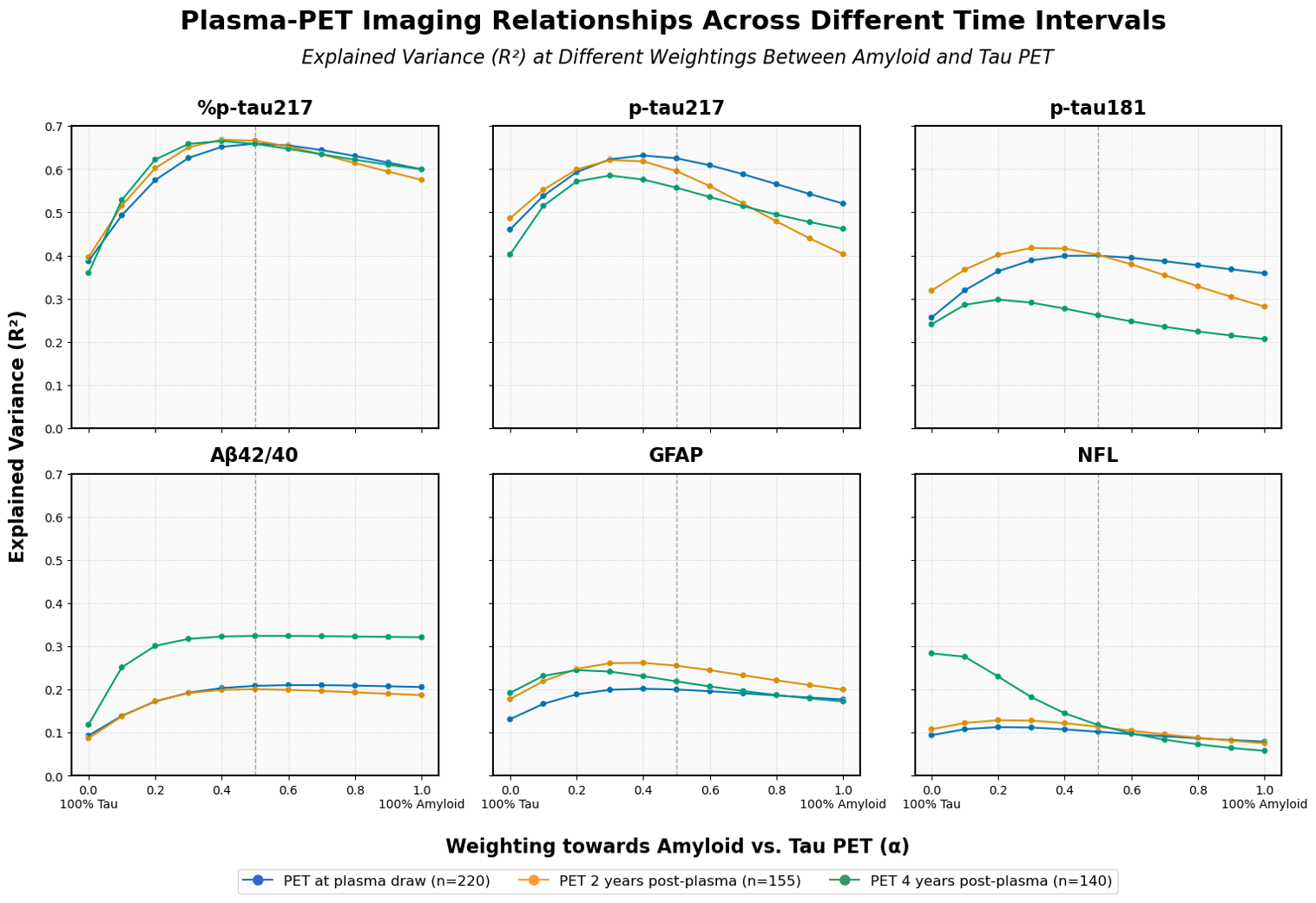Even when collected simultaneously, fluid (blood/plasma) and imaging (PET/MRI) biomarkers do not necessarily reflect concurrent biological processes, as they capture fundamentally different aspects of Alzheimer's disease (AD) progression. Clara Sorensen is a graduate student in Dr Tosun's lab who uses AI for the discovery and validation of multi-modal biomarkers of neurodegenerative diseases including AD and Parkinson's disease (PD). She has been working on building computational biomarkers using graph neural networks to both predict the progression of AD pathology and to predict protein accumulation (Aβ and tau isoforms, glial fibrillary acidic protein (GFAP), and neurofilament light (NfL)) from multimodal image-based (structural MRI, diffusion MRI, and PET) graphs.
At AD/PD 2025 in Vienna, Austria, Clara will be presenting her work to better understand temporal changes in how plasma biomarkers reflect PET-detectable AD pathology. This work found that the associations between PET and plasma biomarkers evolved distinctly over time -- variance in plasma Aβ42/40 was better explained by future PET imaging (up to 4 years ahead), while plasma p-tau217 maintained consistently strong associations across all timeframes (plasma sampling 0-4 years ahead of PET). Similarly, p-tau biomarkers showed highest sensitivity for time-matched PET status, whereas Aβ42/40 sensitivity actually improved when predicting PET status 4 years post-plasma collection.

These findings suggest these biomarkers have different optimal screening timeframes across the AD...

